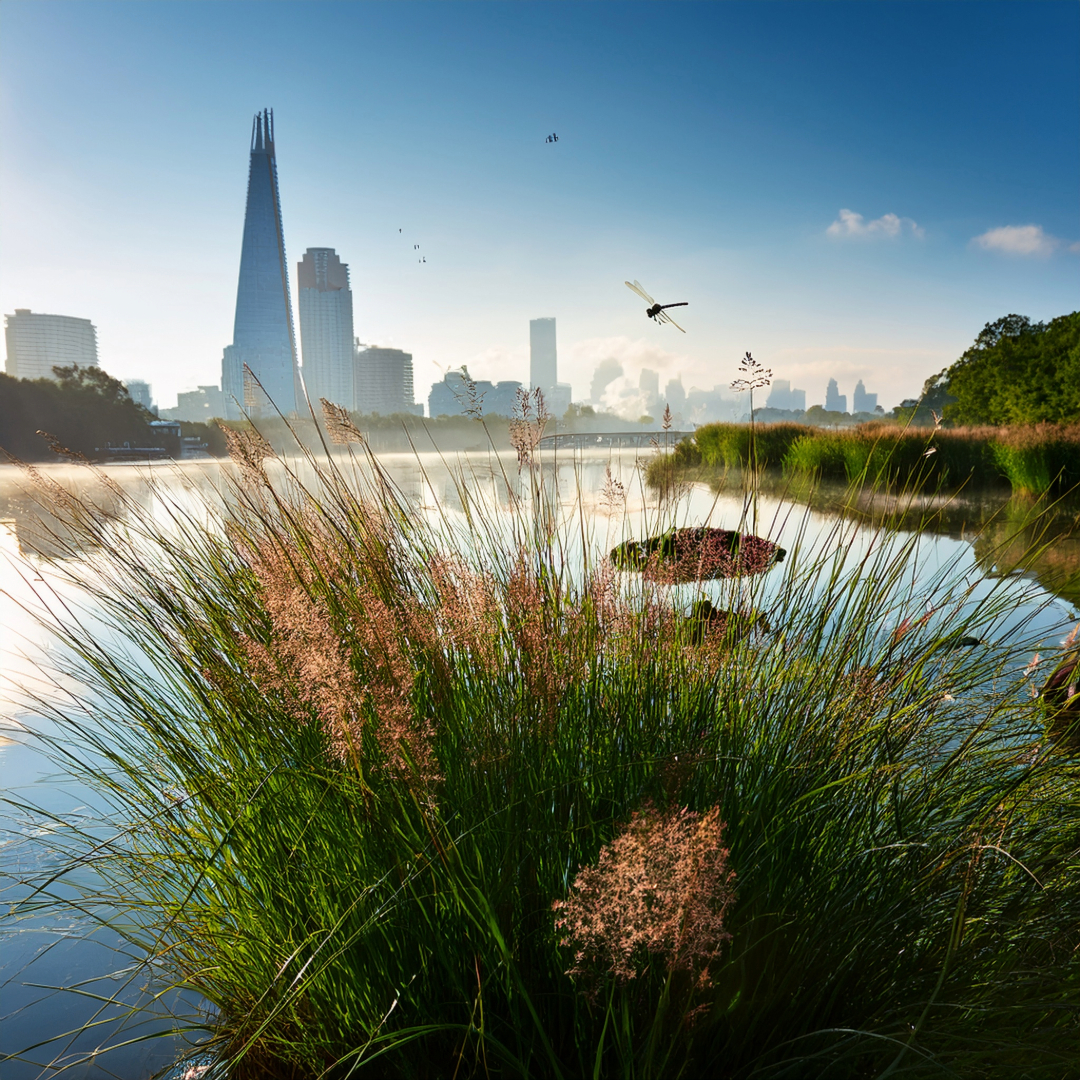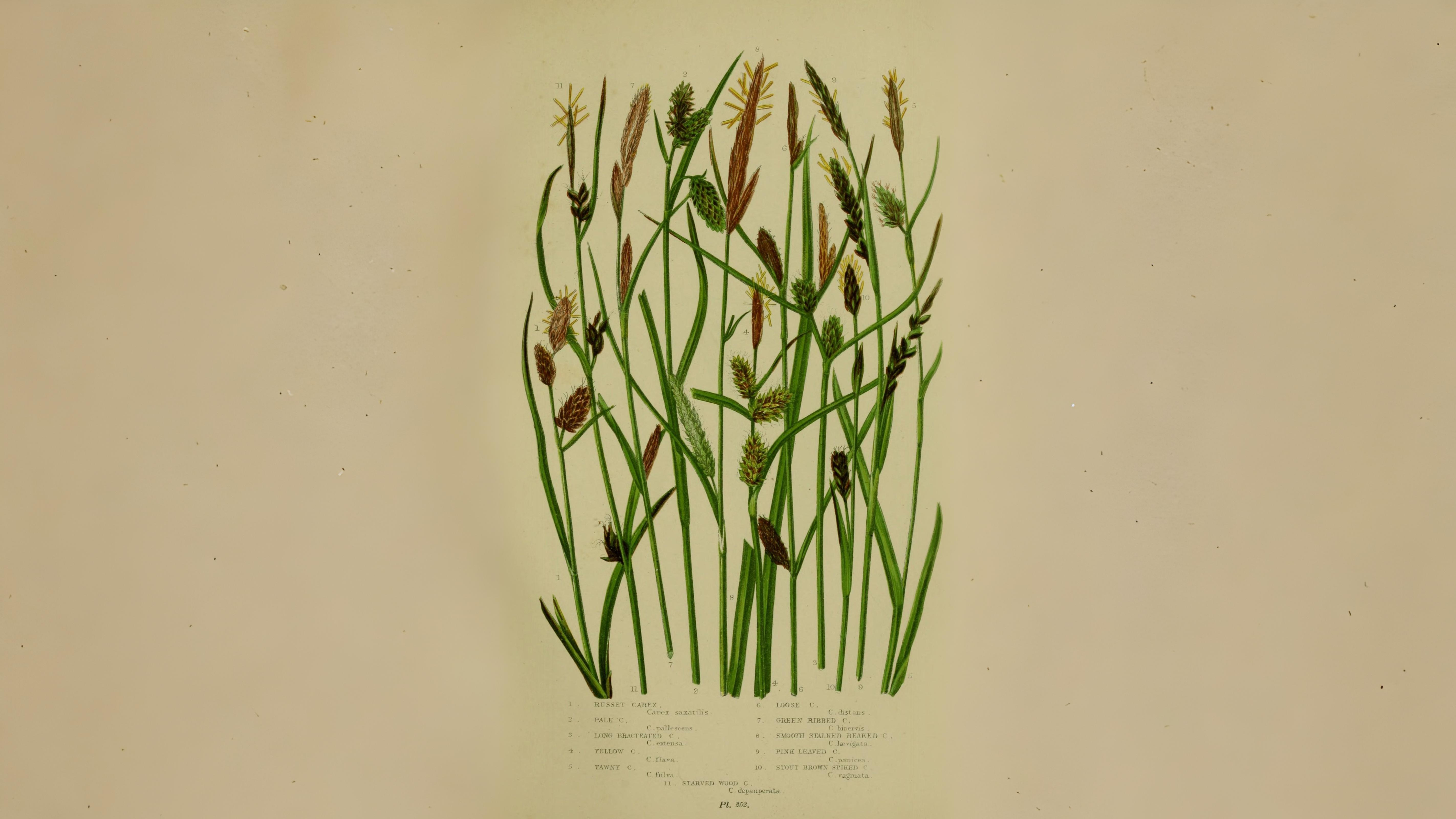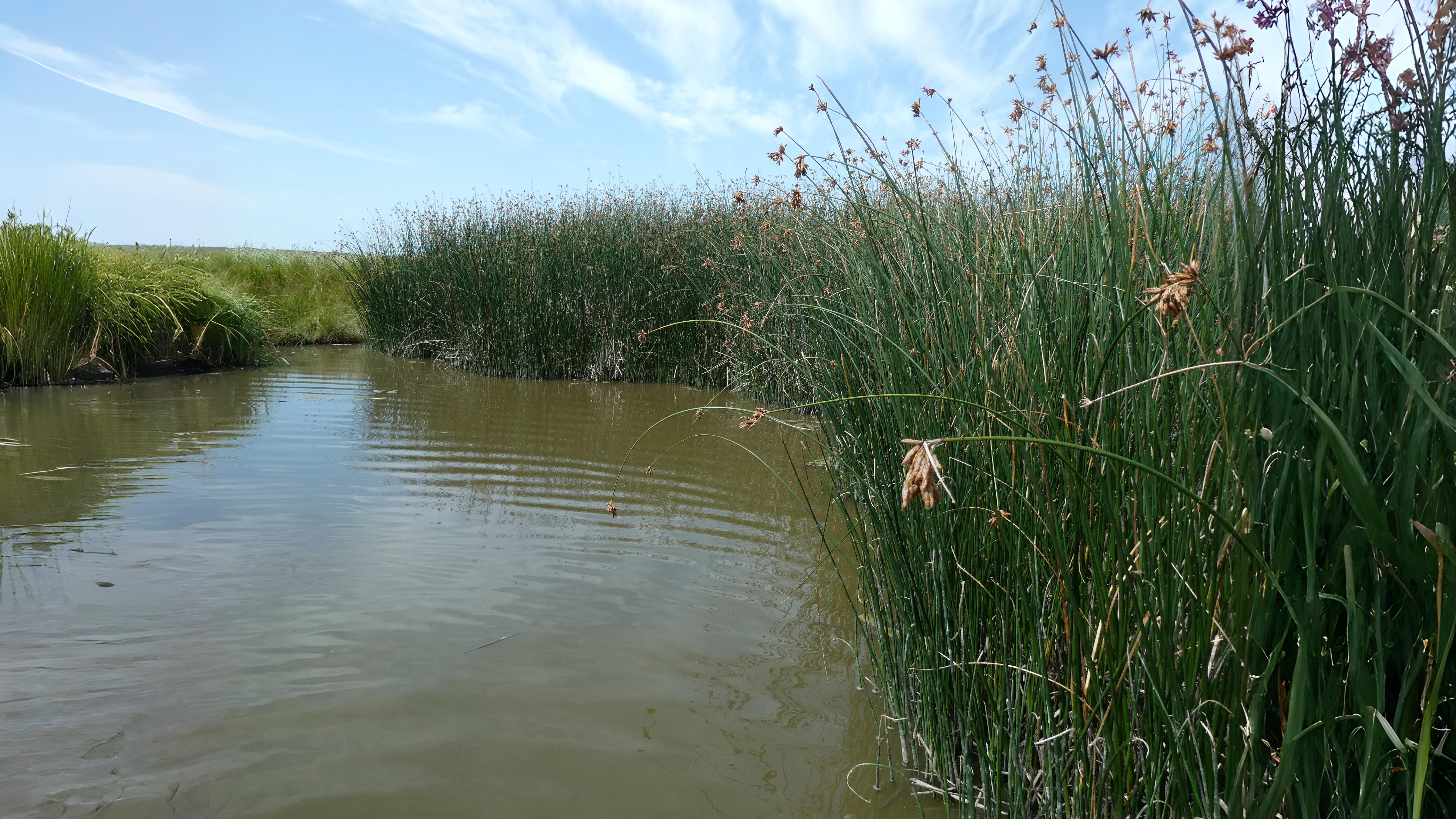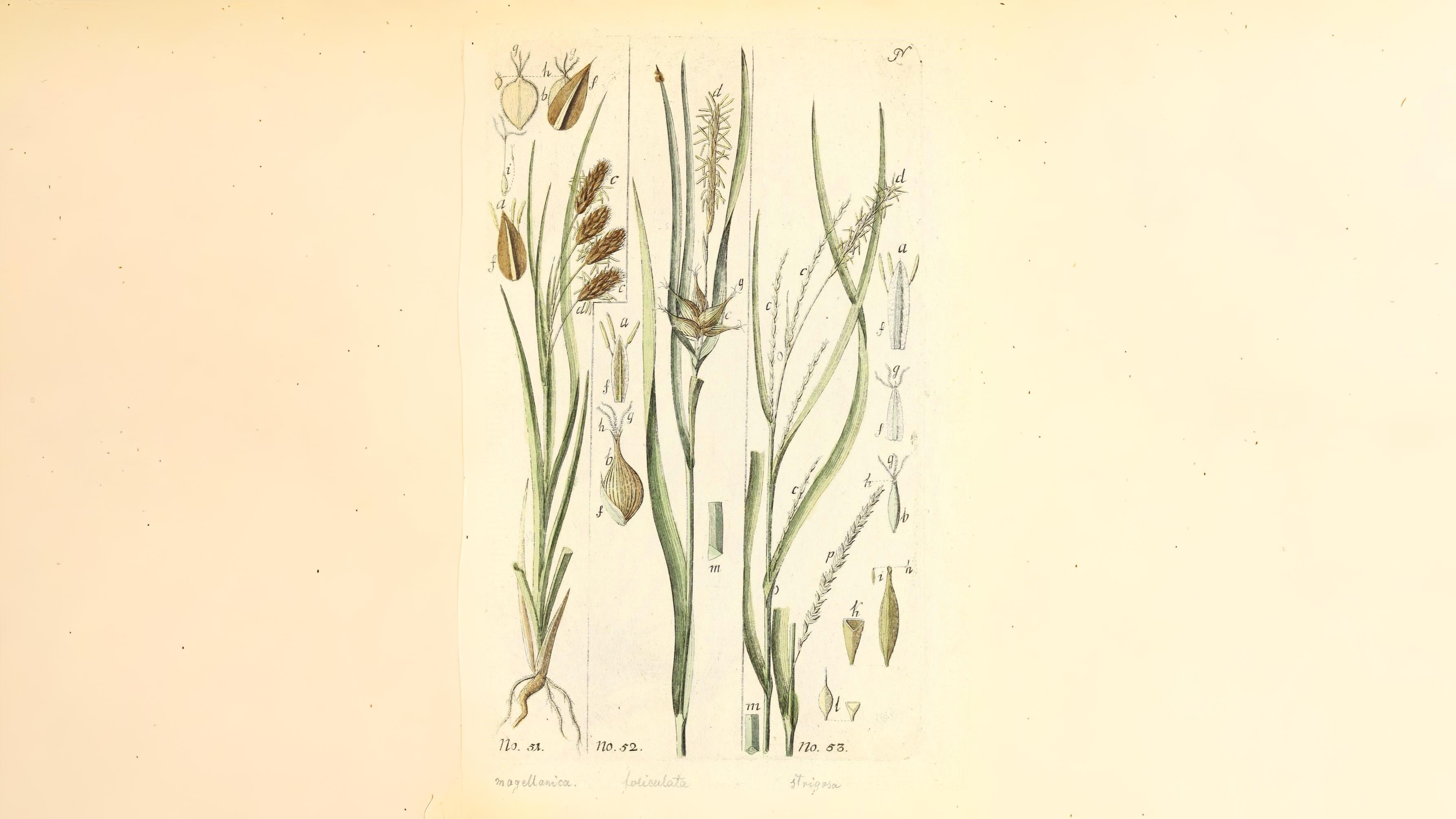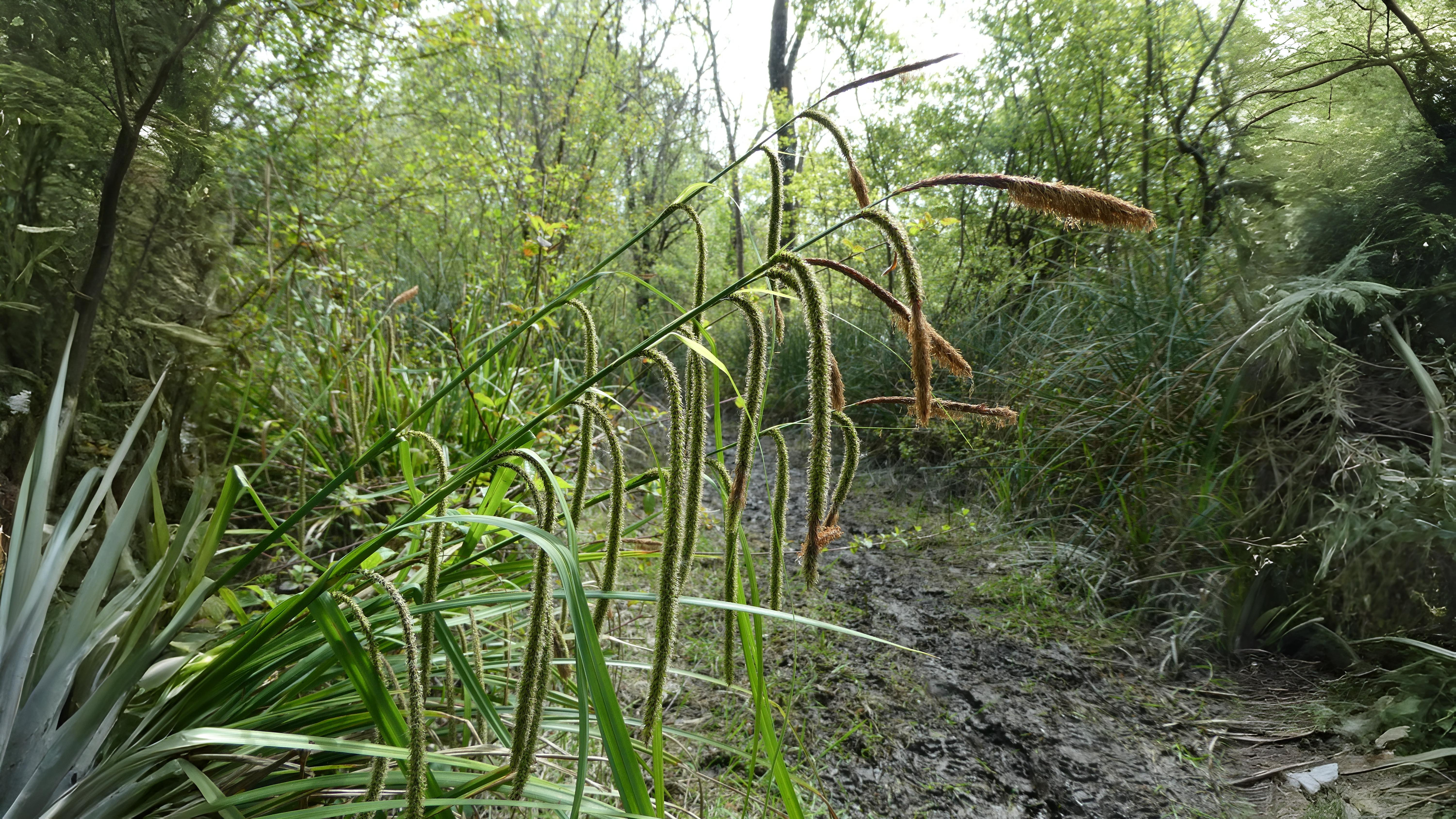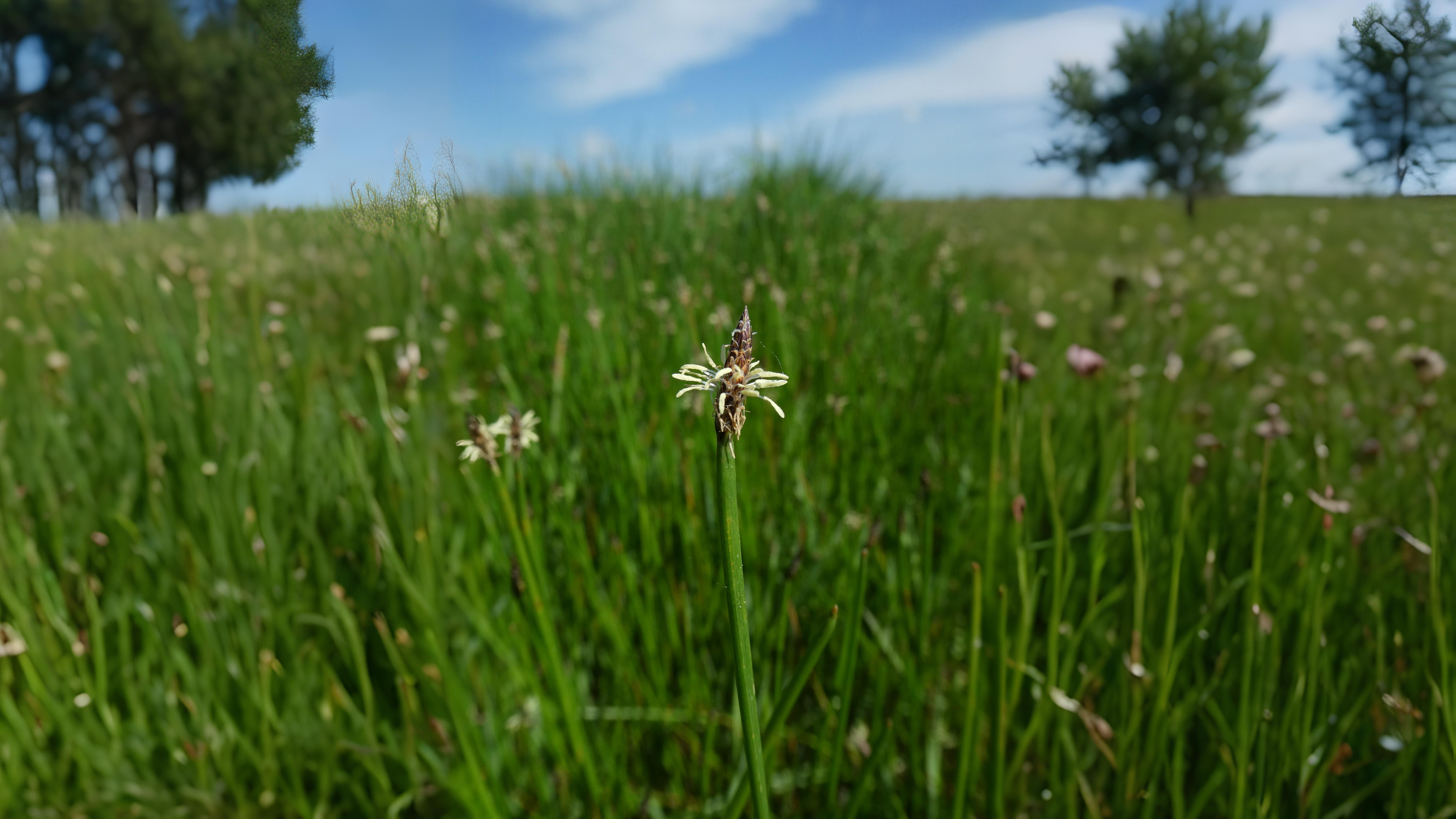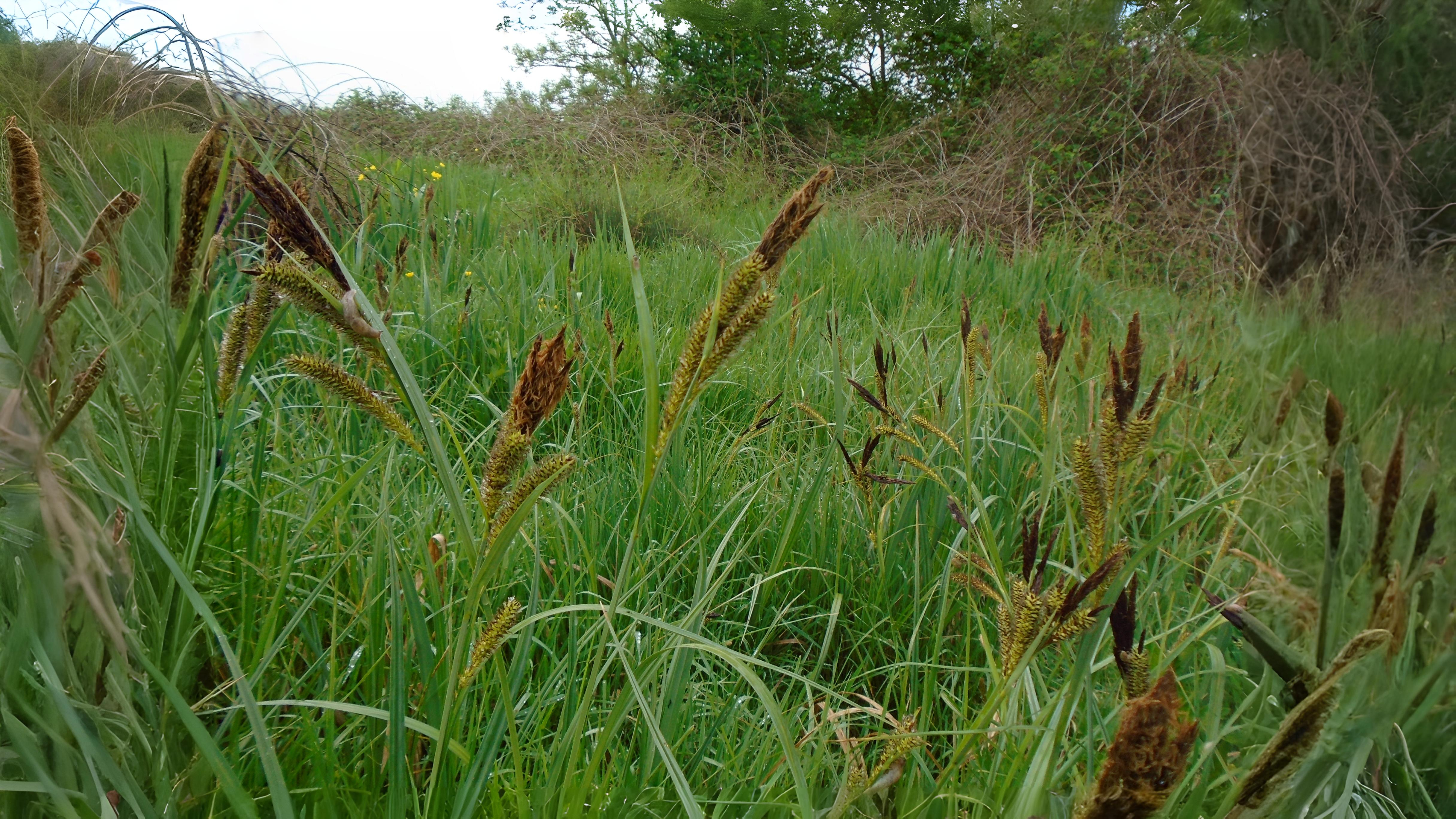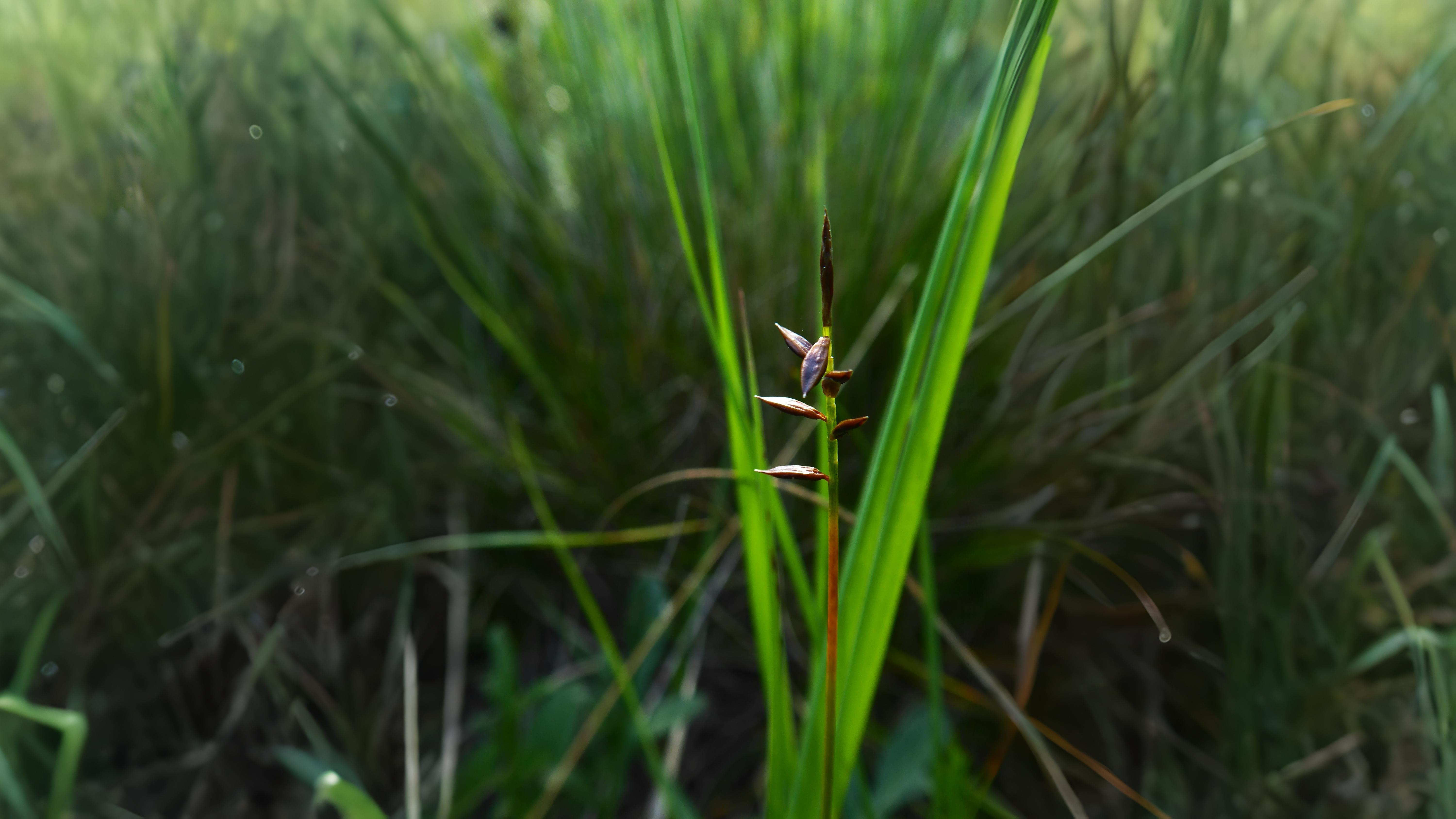Few sedges can be called beautiful but the black, cyperus and great pond sedge are exceptions. Fortunately the black sedge C. nigra is very common. It has bluish-green leaves and neat upright flowerheads with each black spike having a central green midrib and clear membranous edge combining together to produce a highly attractive pattern. The cyperus sedge C. pseudocyperus is first noticed for its unusual yellow-green foliage and then its clusters of neat bristly flowerheads. These are uncomfortable to touch as are its sharply-edged leaves. However, its roots which taste of ginger could well have been eaten at Nonsuch palace when Henry the eighth lived there. It can still be found today growing in Nonsuch park. The great pond sedge C. riparia always attracts attention when it grows in dense patches beside water, especially if its flowerheads are covered in buttery yellow anthers. It can be found at Yeading Brook fields.
Other sedges that may well get noticed this month are the false fox sedge, carnation and hammer sedge. The false fox sedge C. otrubae forms dense tufts up to a metre high beside roads, hedges and ditches. It produces dense clusters of persistent yellowish-green flowers which have a spiky appearance. It can be found in Perivale wood. The carnation sedge C. panicea is a little smaller and a lot rarer but is worth looking for in damp meadows. It gets its name from its blue-green leaves so similar in colour to those of true carnations. The hammer sedge C. hirta occasionally forms large noticeable patches in parts of Walthamstow marshes. It is easier than most to identify as it has hairy leaves, a character not at all common in sedges.
